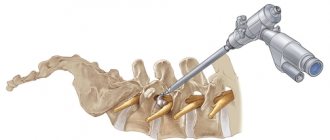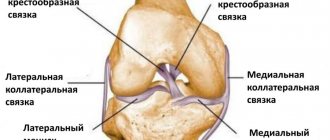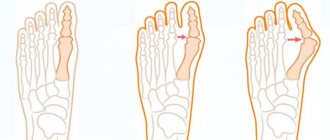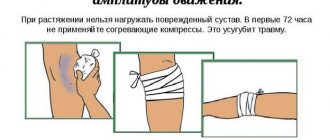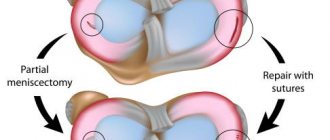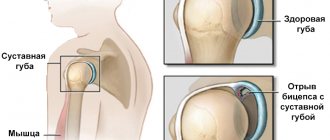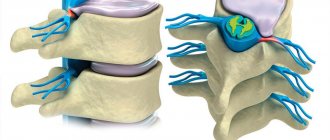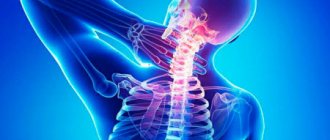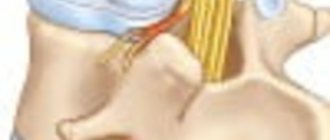Surgery using a metal structure is necessary to stabilize a certain area of the spine. The need for this type of surgical treatment arises if, as a result of traumatic lesions, degenerative-dystrophic changes, congenital and acquired defects, the spinal column has become unstable or has taken an anatomically irregular shape, which negatively affects the quality of life and musculoskeletal capabilities of the patient. The main purpose of installing metal stabilizing systems is to connect an unstable or deformed spinal segment in an optimally favorable and stable position.
Displacement of the vertebral bodies in the cervical spine is an indication for surgery.
Surgical interventions involving fixation of metal stabilizers are recommended in exceptional cases, if conservative methods cannot provide the required effect with the existing clinical picture. For such an operation, the price depends on the configuration, materials and manufacturer of the metal structure, the prosthetic area, and the complexity of the operating process. If carried out under a compulsory medical insurance policy, its minimum price is about 20 thousand rubles, but the total cost in prestigious Russian clinics can be about 250-300 thousand rubles.
An artificial structure, which is attached directly to the bone structures, is usually installed permanently; it is removed only when any complications arise or the need for repeated intervention in the same area where it is located.
Fundamental Stabilization Techniques
Currently, stabilization can be carried out using various open and percutaneous methods; below we will briefly introduce the most common of them.
- Dynamic stabilization is a method of implanting dynamic implants, thanks to which the problematic region is stabilized to normal levels, while in general the biomechanics of the segment is preserved, but does not go beyond non-physiological amplitudes. The implant is primarily installed between the spinous processes of the problematic vertebral bodies in the lumbosacral part. The need often arises with radiculopathy, sequestered hernia, posterior displacement of the vertebrae, and foraminal stenosis.
- Transpedicular fixation - this tactic involves installing a corrective metal structure, which is screws that are rigidly connected to each other with special rods, into the adjacent vertebral bodies through the pedicle (pedicles).
Similar manipulations are prescribed for fractures and displacements of the vertebrae, severe progressive scoliosis and spinal stenosis. Transpedicular fixation for scoliosis. - Transcutaneous stabilization is a technique for minimally invasive introduction of a stabilizing implant into the spine, which is implemented percutaneously (transcutaneously). To introduce the transcutaneous model of the fixator into the segment of interest, a small incision (up to 1.5 cm) is used. A surgical probe is inserted into it, through which, under image intensifier control, the implant is delivered to the problem area and the implanted system is securely fixed to the bone structures. Percutaneous surgery is characterized by minimal trauma, and therefore it is especially relevant for patients with poor health, cancer patients and the elderly.
Dynamic stabilization of the lumbar region.
Which technique for connecting the vertebrae will be the most rational in a particular case is chosen by the surgeon individually based on diagnostic data, anatomical features of the musculoskeletal system, health status, weight, age and other characteristics of the patient’s body.
Surgical process in the lumbar region.
Segmental instability is a common condition of the spine, which in 30% of patients is caused by intervertebral disc herniation, and in approximately 40% by unsuccessful surgical interventions for their removal.
Sample of metal clamps.
It is more advisable, if you can do it, to trust highly specialized foreign surgeons to solve any problem with the spine surgically. The Czech Republic provides the best quality medical services in the field of spinal neurosurgery and prosthetics throughout the world. Moreover, what is important, at the most reasonable prices and with a full-fledged organization of rehabilitation treatment.
Clinical example
These tomograms show an unstable fracture of the Tn12 vertebral body
The first stage was laminectomy with transpedicular fixation using a Chinese system, followed by corpectomy, corpodesis with autologous bone and a Chinese-made thoracolumbar plate.
Complications after installation
There is no need to immediately panic if the temperature rises in the early phase after the intervention, you feel a foreign object in the operated area, swelling and pain. All these early reactions are not always interpreted as complications, but for the most part are the body’s natural physiological response to surgical trauma. In the hospital, and after discharge, in the rehabilitation center, they will create an effective recovery program for you. Therapeutic measures will help strengthen nutrition, activate regenerative and reparative processes in the problem area, strengthen the muscular frame of the back, which will gradually lead you to the desired recovery.
Maybe massage rather than operate?
It is logical that people are still afraid of surgery, even minimally invasive, but sometimes they independently choose much more dangerous treatment methods instead, mistakenly believing them to be a gentle alternative.
Private “Healthy Back Centers”, chiropractors and osteopaths are fashionable and in demand today, but may turn out to be more risky than surgery.
They often save time on diagnostics. Everyone is offered the same thing, regardless of diagnosis, level and nature of pain syndromes. Bad chiropractors treat patients without an MRI or even an X-ray.
Remember, laying on of hands treatment may make the problem worse. Patients regularly come with exacerbations and deterioration of the situation after a visit to a “private” massage therapist or to a dubious “spine health clinic.” When, for example, a person with a cervical hernia (an absolute contraindication for massage) begins to “crunch his vertebrae,” and he comes to us in an ambulance.
Manual therapy is great, but carefully, only as prescribed by a doctor, only after an accurate diagnosis. If the “doctor” puts you on a massage table without asking about your medical history, it’s better to find someone else.
Getting a disability
Now let's talk about officially obtaining disability status. The mere fact of the presence of a metal structure in the spine does not indicate that the patient is entitled to a disability. A group can be assigned only under compelling circumstances, if serious postoperative complications have arisen that limit a person’s ability to work.
Any spinal surgery, including total or partial removal of any spinal structure, followed by implantation of metal screws, plates, staples and/or endoprostheses, is a complex surgical procedure. But it is directly aimed at restoring lost functions of the spine, freeing the patient from the burden of physical limitations and suffering, and not the other way around. Of course, cases of unsuccessful completion of treatment may occur; fortunately, with modern spinal neurotechnologies, an unsatisfactory outcome is very rare.
If the recovery is delayed or the consequences of surgery with a metal structure have developed, which were not resolved during the rehabilitation period, the patient is referred to MSE. Based on medical documentation (ultrasound, REG, MRI, etc.), medical and social examination bodies will assess the person’s health status and make a conclusion regarding the need to assign disability.
The attending physician must necessarily refer a person to undergo MSEC if the following problems exist:
- frequent and prolonged physical and neurological exacerbations that limit the patient in the social, domestic and professional spheres of life;
- the logical completion of the recovery process is greatly delayed;
- the patient developed cephalgic syndrome;
- critical movement disorders (paresis, paralysis), etc. appeared.
It is worth noting that during rehabilitation, each patient receives a sick leave certificate for temporary incapacity for work for an average of 4 months, and only after this time can one begin to deal with issues of group registration. We are talking about assigning lifelong disability (group 1) only if it is not possible to restore the lost functions, in other words, medicine is no longer powerless to do anything. Usually, people with unfavorable conditions are more often given group 3, less often the second; after recommission, it can be removed or transferred to a group that is more severe by the standards of the physical condition of the body.
Rehabilitation after surgery with metal structures
It is important to understand that the spinal system has undergone internal surgical intervention, and global changes have occurred in the anatomical structures in order to correct the distorted and destabilized segment. The operated part needs time to fully recover. In addition, the metal structure must take root well, and the patient must adapt to it. Therefore, be patient, the feeling of discomfort will pass, your musculoskeletal potential will normalize, and you will forget that you even have an artificial device in your spine.
But keep in mind that a successful outcome is only possible if postoperative recovery is carried out competently and with very high quality. Please note that in 80% of complications are a direct consequence of the patient underestimating the role of rehabilitation after such interventions , an inadequately organized treatment and rehabilitation program, or, even worse, its complete absence.
Only correct and impeccable compliance with all highly professional medical recommendations will allow you to return to a full life and avoid various types of consequences: deep infections, displacement of installed structures, muscle atrophy, degenerative lesions of nearby segments, relapse of instability, spinal stenosis, damage to the ligamentous apparatus, etc.
Basic recovery principles
- The recovery period and the timing of strict bed rest after surgery depend on the area of fixation: the larger it is, the longer they are. If bone grafts are used in conjunction with a metal structure, the spine requires the longest and maximum immobilization until the bones heal well.
- Activation of the patient begins as soon as possible. When exactly (in a day, 3-5 days or later) is decided individually.
- In order to support and create the most favorable conditions for healing and fusion of the operated part of the ridge, special orthopedic corsets are used.
- During the entire rehabilitation cycle, the patient must perform therapeutic exercises prescribed by the doctor, strictly under his supervision. Physiotherapy sessions and limb massage are also provided.
- To relieve pain, effective painkillers and anti-inflammatory drugs with a selective mechanism of action are prescribed.
- In order to prevent wound infection, an intensive course of antibiotic therapy is prescribed immediately after stabilization.
- To counter the development of blood clots in the veins of the lower extremities and pulmonary embolism, the specialist recommends an effective anticoagulant.
- If severe neurological disorders were detected in the preoperative period, for example, numbness and weakness of the limbs or dysfunction of the pelvic organs, in addition, neurometabolic drugs are prescribed.
- During the recovery process, they strictly adhere to the established limit of physical activity and heavy lifting (no more than 3 kg). In addition, it is extremely important not to assume a sitting position until the doctor removes this prohibition from you.
- It is forbidden to make sudden movements, bend, twist, and intensive turns of the body, arching in the back, pushing and shock loads (jumping, running, etc.) and swinging the limbs should not be allowed.
Discharge from the hospital is usually issued between 7 and 14 days, after which the patient is obliged to continue to receive adequate medical care in a specialized department or rehabilitation center, where he continues and completes the full course of recovery.
With the right approach, people who have undergone corrective and stabilizing surgery return to normal life after approximately 3-4 months. However, it is worth considering that in a certain group of severe patients, due to the individual characteristics of the body that complicate the processes of normal recovery, the rehabilitation period can be extended to six months, sometimes up to 12 months or more.
Exercise therapy after spinal surgery with metal structures
Life after spinal surgery associated with the implantation of a metal structure, as many characterize it, began to take on meaning compared to the preoperative state. With the ideal installation of a metal structure and the subsequent rehabilitation that is no less flawless in all aspects, the painful syndrome no longer bothers you, the range of motion increases noticeably, and it becomes possible to do household chores without difficulty and with pleasure, go to your favorite job, and even do simple activities. kinds of sports. Of course, not everything comes at once, as it is not difficult to figure out, people try their best to finally feel like a physically complete person and maintain the results achieved for life.
Procedures in water.
In addition to the fact that patients must keep themselves within certain lifelong restrictions (monitor their weight, do not overload the spine, do not carry heavy objects), it is extremely important for them to perform special exercises every day, even after completion of rehabilitation. Therapeutic exercises after recovery will help keep the muscles in normal tone. After all, it is the muscles that serve as the main support, regulator of the load and mobility of the spinal column, as well as any osteo-articular part of the musculoskeletal system. The weakness of muscle tissue causes metabolic and circulatory disorders and, as a consequence, the development and progression of degenerative phenomena in the vertebrae, cartilage, and intervertebral joints. Naturally, after undergoing an operation, no one wants to face a recurrence of the problem or the sudden appearance of a cascade of new difficulties.
Surgical sutures approximately 3 months after surgery.
The development of exercise therapy is carried out by a specialist who knows all the intricacies of the surgical process, the characteristics and dynamics of the patient’s functional state and other important characteristics. Therefore, we have no right to recommend you a complex of therapeutic exercises for any period. There is no universal gymnastics for everyone! For our part, we can only point out the importance of physical therapy, both in the early and late periods, and at long-term stages. Remember that in the delayed period it is the only and most effective means of resisting the development and progression of spinal diseases. Please also note the points below.
Clinical example
Fracture of the first lumbar vertebral body
Type of surgical wound. In place of the removed vertebral body, after decompression, a vertebral body prosthesis was installed Obelisk, Ulrich, Germany
The prosthesis is additionally fixed with a thoracolumbar plate.
X-ray control after surgery.
Rules for performing exercises
- On the first day, classes are carried out in bed, and they start with the simplest - movements of the hands, feet, flexion/extension of the knees and elbow joints, breathing exercises and controlled contractions/relaxations of individual muscle groups. Gradually and very carefully, the spectrum of exercise therapy is expanding in the future.
- Each element of the movements is performed calmly, slowly and smoothly, while you cannot force the amplitude and do the recommended exercises more than the prescribed number of times.
- Exercise should not provoke pain or lead to an increase in any discomfort that you still have. If this happens, immediately stop doing the painful exercise and consult your doctor immediately. It may be too early for you to undertake such a task. In any case, do not do anything through pain and, especially, do not ignore this fact!
- If, during any physical activity, you feel severe pain with a rapid increase, sharp severe pain or crepitus (unnatural sounds, such as crunching, clicking, etc.) in the place where the metal structure is located, immediately inform your doctor! It is possible that the unfavorable pathogenesis is associated with breakage or loosening of the installed implant.
Appearance of the implant
The prosthesis is placed between the bodies of adjacent vertebrae.
Intraoperative X-ray control.
Thus, a promising direction in implantology of spine surgery is the creation of new, universal vertebral prostheses that allow quick, convenient, reliable and simultaneous performance of corporedesis.
